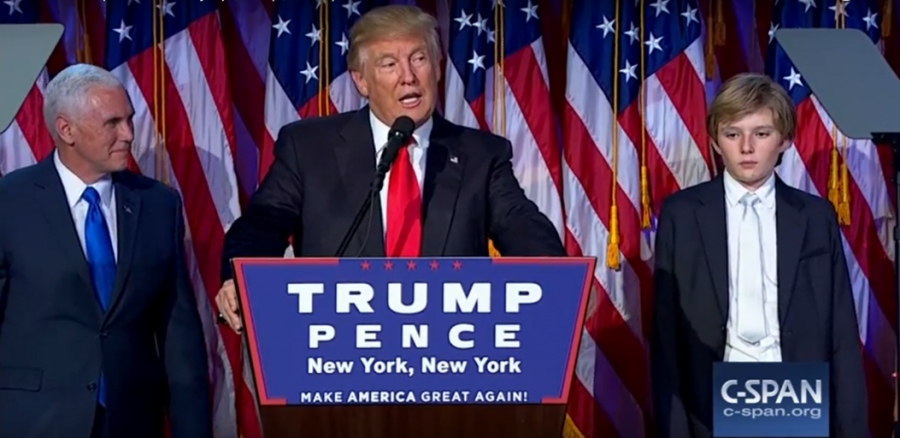Holding their breaths, with stomachs clenched, many Clinton supporters turned away from the polling results. Florida had just been lost to Donald Trump, and as far as the Clinton campaign was concerned, they had already given up. The streamers and balloons at the hopeful victory party were packed away or tossed into the trash. When the results were later announced that night, the room was already empty.
Yet, not all hope was lost. According to political analysts, there was still a 20 percent chance for the Democratic nominee to win.
But she didn’t.
Instead, the silent majority, who had for the longest time been an unknown mystery, revealed their hand. Marked in their ballots were only the GOP and Trump. By the end of the election, the Republicans had obtained control of both the Senate and House of Representatives with solid majorities.
On the morning of Nov. 9, many Americans were shocked by the results of the presidential election.
Even though Hillary Clinton had heavy support from the media and won the popular vote, she lost the electoral vote. CNN calculated that the Democratic nominee was leading by 47.7 percent to 47.5 percent across the United States with the popular vote, but then lost 290 to 228 in electoral votes.
“I was honestly shocked by this nightmare of an outcome,” said senior Devon Paragas. “It is unreasonable that Clinton isn’t president. With a 40-year career in the making, and being married to a man who’s helped our economy, I’d rather take a woman with a few problems than Trump.”
After conceding the race, Clinton asked the American public to have hope and an open mind for the future of President-elect Trump.
“This is not the outcome that we wanted or worked so hard for. And I’m sorry that we did not win this election for the values we share and the vision we hold,” said Clinton during the post-election morning. “And to all the women that supported this campaign, who put their faith in this campaign and in me, I want you to know that nothing has made me prouder than to be your champion.”
Following, President Barack Obama addressed the issue of how his government would transition into the hands of President-elect Trump.
“Now, everybody is sad when their side loses an election. But the day after, we have to remember that we’re actually all on one team,” said Obama while emphasizing a peaceful transition of power. “That’s what the country needs — a sense of unity; a sense of inclusion; a respect for our institutions, our way of life, rule of law; and a respect for each other.”
Despite the mass shock to the Trump victory, not all students were surprised by the Electoral College’s choice. In fact, several believed that the increased coverage given to Clinton may have blinded Democrats to the largely unspoken approval that won Trump the election.
“I feel that many people were too embarrassed to say they wanted to vote for [Trump]. People are really shunned if they decide to vote for him in certain areas,” said junior Theo Lee. “That’s why Clinton was initially leading in the first polls [before the election]. But when it came down to the real election, these people who hadn’t voiced their opinions before just voted for Trump.”
On Twitter, many of these “silent majority” voters emerged to congratulate the GOP and attack both Democrats and the media for taking biased positions during the election.
Carlmont students also attributed Clinton’s loss to overconfidence in both Clinton’s campaign staff and the party itself. When Clinton and Trump were both chosen as the presidential nominees, both news organizations and talk-shows thought it implausible for Trump to win because his ideas were too radical for even hardcore Republicans.
On the contrary, some political analysts agreed that this radicalness caused better voter turnout for the GOP candidate.
“We live in one of the most liberal and progressive places in the world. We didn’t want to believe that Trump could win,” said junior Tessa Bagby. “When I woke up and saw the headlines I just went numb. I’m scared as a woman, I’m scared for all of my friends that are LGBTQ+, Muslim, and Latino.”


